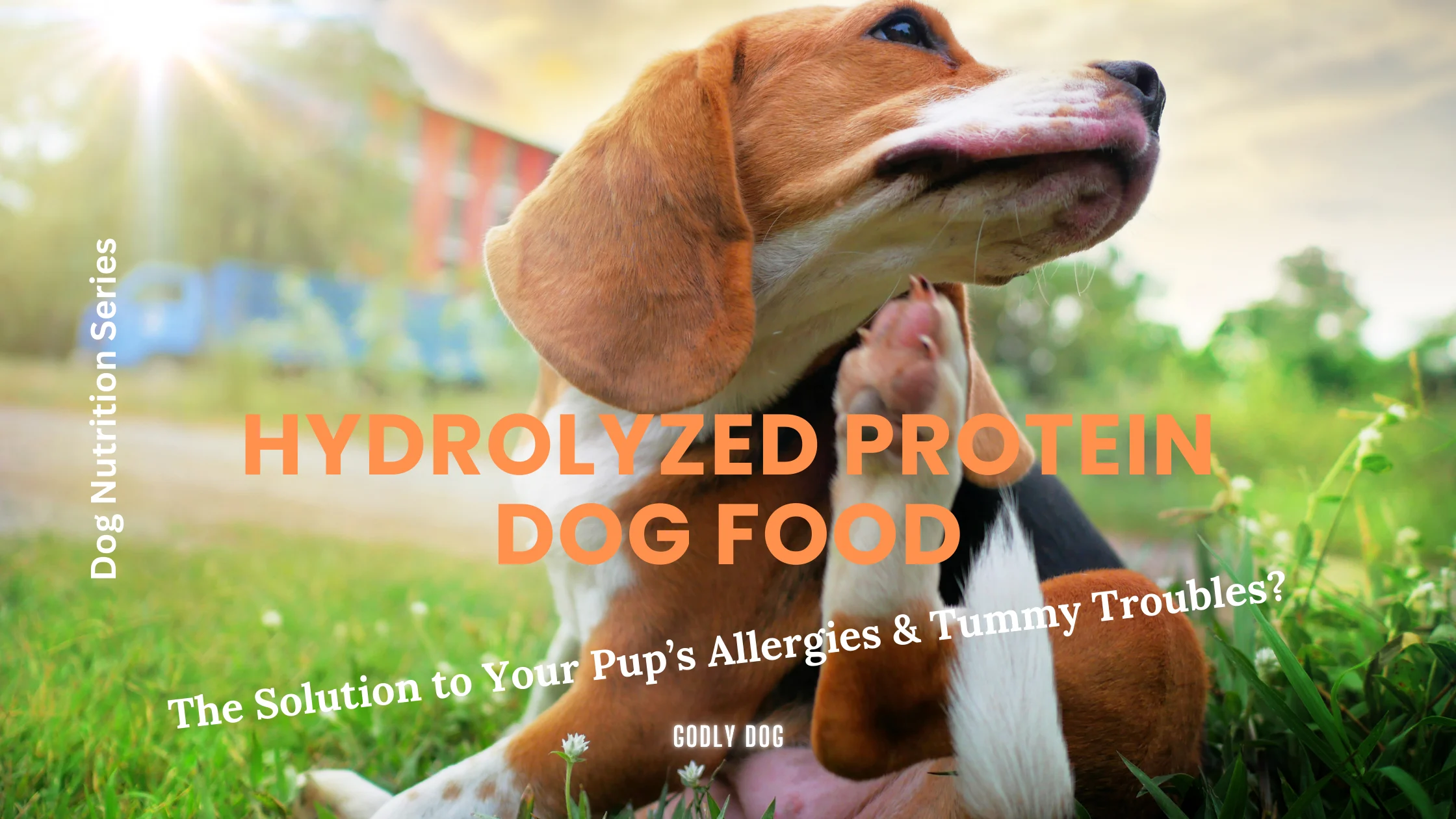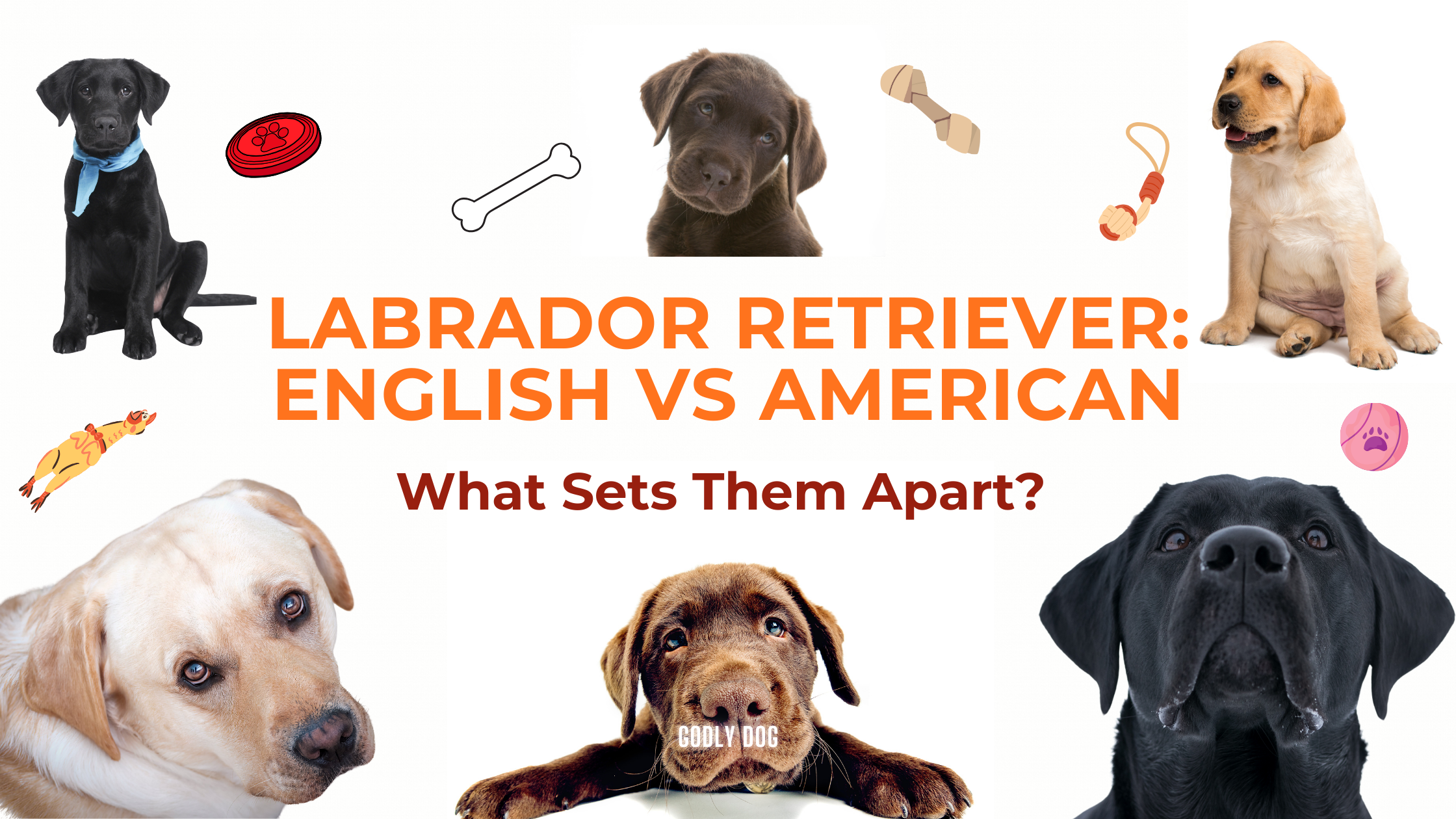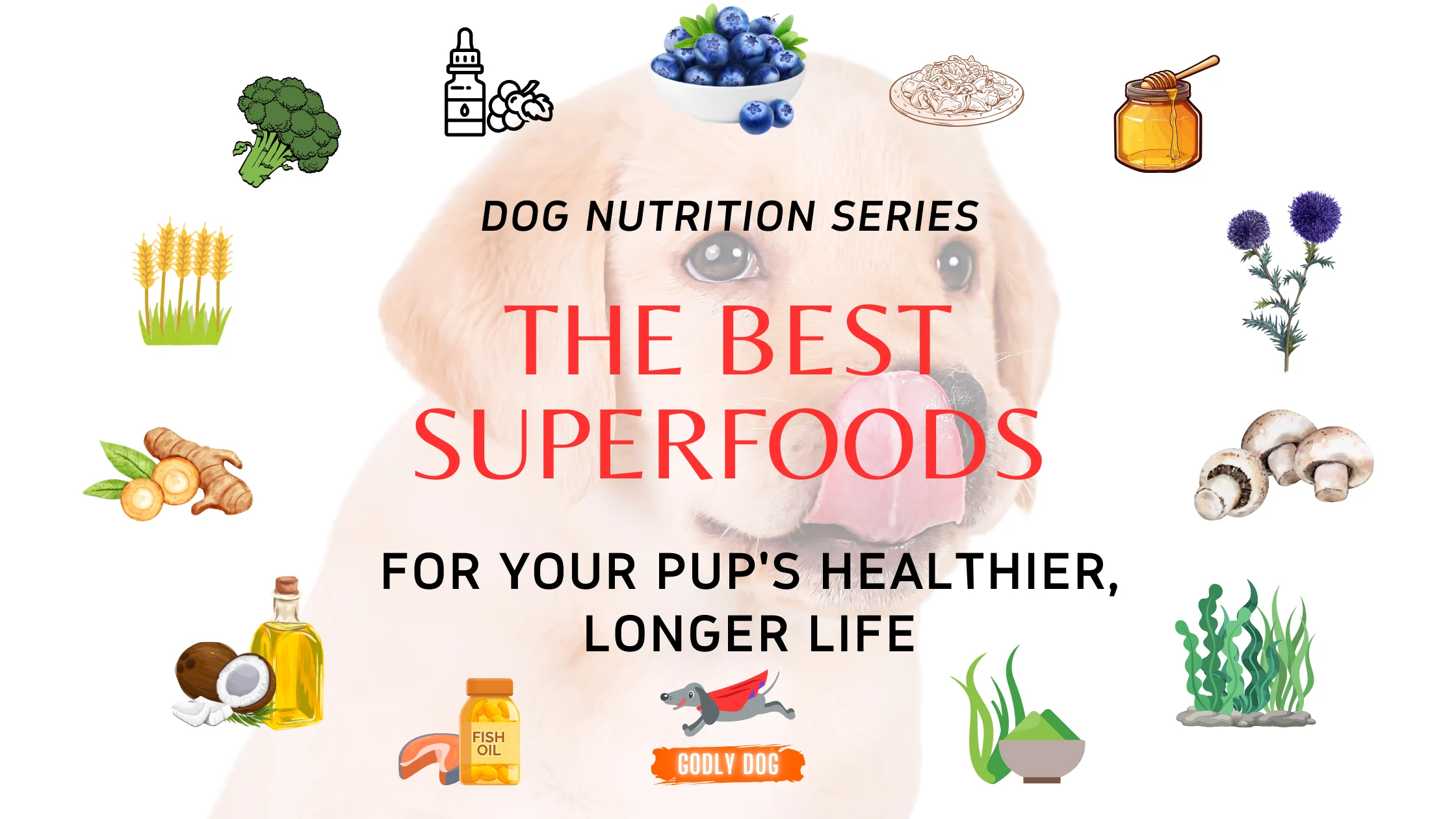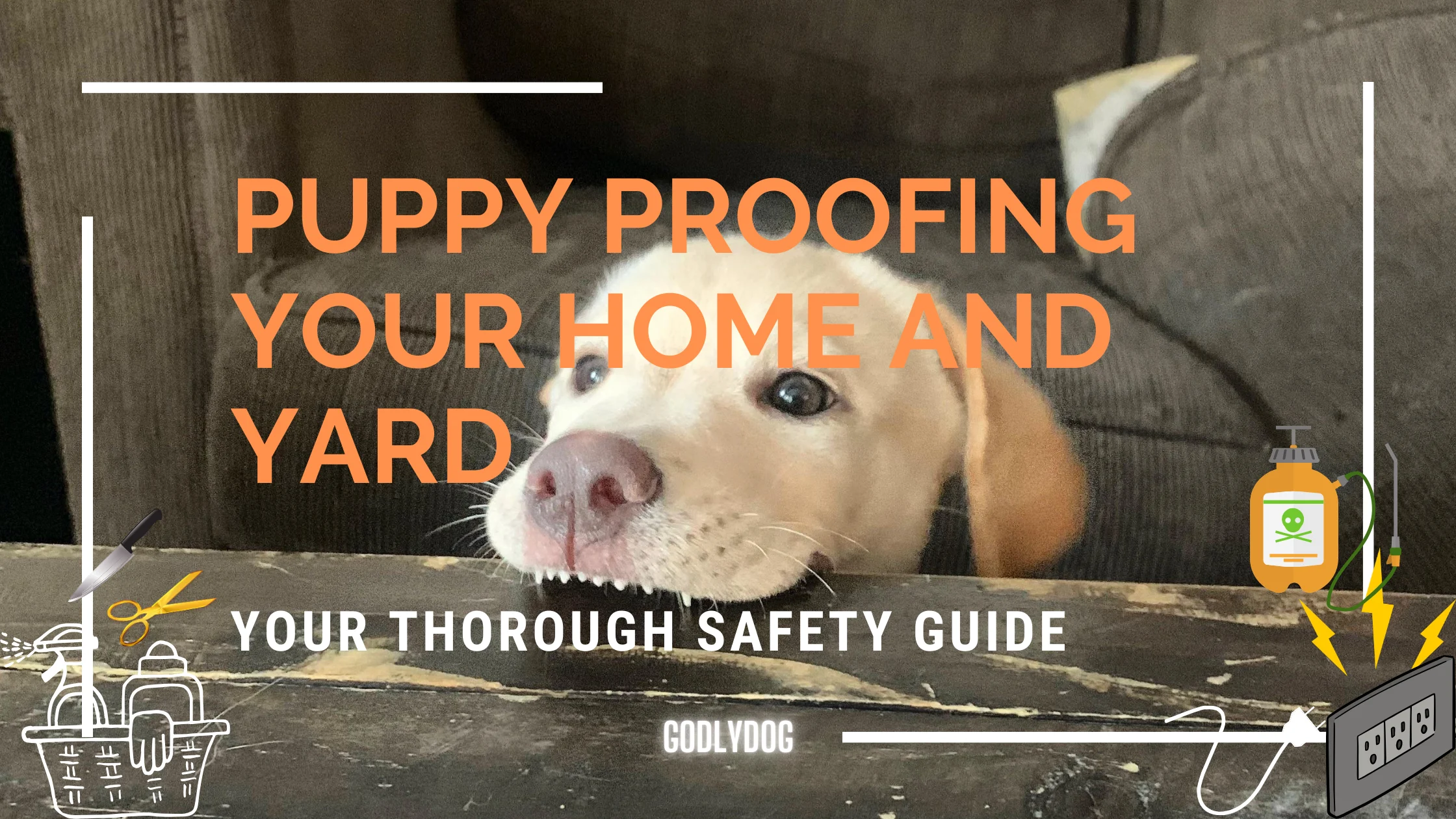Hydrolyzed Protein Dog Food: The Ultimate Solution for Food Allergies?

If your dog is constantly scratching, licking their paws, or dealing with never-ending tummy troubles, you’re not alone. Many dog parents go through trial and error with different diets, only to find their pup still struggling with allergies or digestive issues. Enter hydrolyzed protein dog food—a vet-approved, scientifically formulated diet designed for dogs with severe food sensitivities, allergies, and digestive disorders.
But what exactly is it? How does it work? And is it really the magic fix for your furry friend’s woes? Let’s break it all down—without the fluff (except for your dog’s, of course).
What Is Hydrolyzed Protein Dog Food, and How Does It Work?
Hydrolyzed protein dog food sounds like something straight out of a science lab—and, well, it kind of is! But don’t let the fancy name scare you. It’s simply dog food where the protein has been broken down into tiny pieces (amino acids and peptides) that your dog’s immune system won’t recognize as allergens.
Here’s why that matters:
- ● No immune overreaction – Many food allergies occur because your dog’s immune system mistakes proteins as threats. Since hydrolyzed proteins are so small, they fly under the radar, preventing allergic reactions.
- ● Easier digestion – The smaller protein molecules make it easier for dogs with sensitive stomachs or inflammatory bowel disease (IBD) to digest their food without discomfort.
- ● Vet-recommended for food trials – If your vet suspects a food allergy, they might suggest a hydrolyzed protein diet to rule out allergens and pinpoint what’s causing issues.
Think of it as pre-chewed food (but, you know, in a totally non-gross, scientifically advanced way).
What Is Hydrolyzed Protein Dog Food Made Of?
Now that we know how hydrolyzed protein dog food works, let’s talk about what’s actually in it. No, it’s not some mysterious lab concoction—just carefully processed ingredients designed to keep your pup’s tummy (and immune system) happy.
Here’s what you’ll typically find in hydrolyzed protein dog food:
- ● Hydrolyzed Protein Source – This is usually chicken, soy, or fish protein that has been broken down into tiny peptides or amino acids. Some brands even use hydrolyzed duck or turkey for dogs with extreme sensitivities.
- ● Carbohydrates – Easily digestible sources like potatoes, rice, or cornstarch help provide energy without triggering allergies.
- ● Fats & Oils – Essential fatty acids from fish oil or vegetable oil support skin health and digestion.
- ● Vitamins & Minerals – A complete and balanced diet means added B vitamins, omega fatty acids, and essential minerals for overall health.
- ● No Common Allergens – These diets usually omit dairy, eggs, wheat, and artificial additives—all common culprits behind food allergies.
Hydrolyzed protein food may sound like it’s missing something (like the allergen triggers your dog doesn’t need), but rest assured, it’s still nutritionally complete. Your dog won’t even know they’re eating “special” food—though they may demand an explanation if it doesn’t smell like their usual feast!
Who Needs Hydrolyzed Protein Dog Food?
Not every dog needs a hydrolyzed protein diet—some pups can chow down on anything and be just fine (lucky them!). But for dogs with food allergies, chronic digestive issues, or inflammatory conditions, this specialized diet can be a game-changer.
Here are some situations where hydrolyzed protein dog food might be the right choice:
1. Dogs With Food Allergies or Sensitivities
If your dog is constantly itching, licking their paws, or suffering from skin rashes, they might have a food allergy. Common allergens include chicken, beef, dairy, wheat, and soy. Hydrolyzed protein dog food removes the immune system’s ability to recognize these allergens, helping to eliminate allergic reactions.
2. Dogs With Chronic Digestive Issues
Does your pup have frequent diarrhea, vomiting, or bloating? If they’ve been diagnosed with Inflammatory Bowel Disease (IBD), gastroenteritis, or chronic diarrhea, a hydrolyzed protein diet can reduce irritation and improve digestion.
3. Dogs With Exocrine Pancreatic Insufficiency (EPI)
EPI is a condition where a dog’s pancreas doesn’t produce enough digestive enzymes. Because hydrolyzed proteins are easier to digest, they can help dogs with EPI absorb nutrients more effectively.
4. Dogs on an Elimination Diet Trial
If your vet suspects a food allergy, they might recommend a hydrolyzed protein elimination diet. This means feeding only hydrolyzed protein food (no treats or table scraps!) for several weeks to see if symptoms improve. If they do, it’s a strong sign that food allergies were the problem.
5. Dogs Recovering From GI or Immune System Issues
Some dogs with weakened immune systems or recovering from gastrointestinal infections may benefit from hydrolyzed protein diets while their bodies heal. The easily digestible nature of the food makes it gentler on their system.
Does Your Dog Need Hydrolyzed Protein Food?
If your dog constantly has tummy troubles, itchy skin, or unexplained health issues, talk to your vet. They’ll help determine whether hydrolyzed protein food is necessary or if another dietary adjustment might work.
Benefits of Hydrolyzed Protein Dog Food

Switching to hydrolyzed protein food isn’t just about eliminating allergies—it can provide several health benefits for dogs dealing with chronic digestive and immune-related issues. Here’s what makes this diet so special:
1. Reduces Allergic Reactions
Since hydrolyzed protein is broken down into tiny, non-allergenic pieces, it prevents your dog’s immune system from going into overdrive. No more itchy paws, inflamed skin, or endless scratching!
2. Supports Digestive Health
Dogs with Inflammatory Bowel Disease (IBD), chronic diarrhea, or sensitive stomachs often struggle to digest regular proteins. Hydrolyzed protein formulas are easier to absorb, reducing symptoms like bloating, vomiting, and diarrhea.
3. Helps With Elimination Diets
If your vet is trying to pinpoint a food allergy, they may recommend a hydrolyzed protein diet. Since it contains proteins in an unrecognizable form, it helps reset your dog’s immune response, making it easier to identify problematic ingredients.
4. Aids Dogs With Pancreatic and Liver Conditions
Dogs with Exocrine Pancreatic Insufficiency (EPI) or liver disease often struggle with nutrient absorption. Hydrolyzed protein food is formulated to be easier on their digestive system, ensuring they get the nutrients they need.
5. Improves Nutrient Absorption
When digestion is compromised due to allergies or medical conditions, essential nutrients may not be absorbed properly. Hydrolyzed protein diets help optimize nutrient uptake, keeping your dog healthier in the long run.
6. Provides a Balanced Diet
Veterinary-prescribed hydrolyzed protein foods are nutritionally complete, meaning they contain the right mix of vitamins, minerals, and essential fatty acids to keep your dog thriving.
Is This Special Food the Magic Fix?
While hydrolyzed protein food can dramatically improve allergy and digestive symptoms, it’s not always a one-size-fits-all solution. Some dogs may need additional dietary adjustments, supplements, or medications. Always work closely with your vet to find the best approach for your pup’s unique needs.
Disadvantages of Hydrolyzed Protein Dog Food
While hydrolyzed protein food has impressive benefits, it’s not perfect. Here are some downsides to consider before making the switch:
1. It’s Expensive (Like, Really Expensive)
Hydrolyzed protein dog food isn’t your average kibble—it’s scientifically formulated and often vet-prescribed, making it pricier than regular dog food. Be prepared for a higher bill at checkout.
2. Limited Availability
Unlike regular dog food, hydrolyzed protein diets are usually only available through veterinary clinics or specialized pet stores. You won’t find them on every grocery store shelf, which can make last-minute refills tricky.
3. Some Dogs Don’t Like the Taste
Since the proteins are broken down, hydrolyzed dog food can have a different taste and smell compared to regular dog food. Some picky eaters might turn their noses up at it—so be prepared to experiment with different brands or mix it with wet food to make it more appealing.
4. It’s Not Always Necessary
Not every dog with skin or stomach issues needs hydrolyzed protein food. Sometimes, a limited-ingredient diet (LID) or a novel protein diet (like duck or venison) is enough. Jumping straight to hydrolyzed food without exploring other options can be an unnecessary expense.
5. Transitioning Can Be Tricky
Because hydrolyzed protein food is so different from regular kibble, some dogs experience an adjustment period with mild digestive upset. A slow transition over 7-10 days is crucial to avoid stomach issues.
So, Is It Worth It?
If your dog has severe food allergies, IBD, or chronic digestive issues, hydrolyzed protein dog food can be life-changing. But if your pup only has mild sensitivities, a less expensive limited-ingredient diet might be enough. Always consult your vet before making the switch.
How to Choose the Best Hydrolyzed Protein Dog Food
So, you’re convinced that hydrolyzed protein food is worth a try. But with multiple brands on the market, how do you pick the best one for your pup? Here’s what to look for:
1. Get a Vet Recommendation First
Not all hydrolyzed diets are the same. Your vet will recommend the right formula based on your dog’s specific health needs—whether it’s food allergies, IBD, or chronic GI issues. Some brands require a prescription, so you’ll need vet approval anyway.
2. Check the Hydrolyzed Protein Source
Should you want to pick and choose, most hydrolyzed diets use chicken, soy, or fish protein. If your dog has a known allergy to one of these, obviously make sure the food you choose has an alternative hydrolyzed protein source.
3. Prioritize High-Quality Ingredients
Look for a formula with easily digestible carbohydrates (like rice or potato) and essential fatty acids (for skin health). Avoid unnecessary fillers, artificial preservatives, and by-products that could irritate your dog’s system.
4. Choose Between Dry Kibble or Wet Food
Some dogs prefer wet food over kibble, and hydrolyzed protein diets come in both forms. If your pup is picky or struggles with dry food, a hydrolyzed canned option might be better.
5. Look for Added Nutritional Support
Some hydrolyzed protein foods include prebiotics, omega fatty acids, and antioxidants to further support digestive health and immune function. These extras can be beneficial for dogs with sensitive stomachs.
6. Read Reviews from Other Dog Parents
Since hydrolyzed protein diets can be an investment, check reviews from other pet parents who have tried them. They can give insight into taste, effectiveness, and how well dogs adjust to the food.
7. Buy from a Reliable Source
Stick to trusted pet stores, veterinary clinics, or reputable online retailers. Be cautious with third-party sellers, as counterfeit pet food is a real issue.
Pro Tip: Start with a Small Bag First
Since some dogs are picky about the taste, buy a smaller bag or trial-size pack before committing to a bulk purchase. This way, you can test if your dog will eat it without wasting money on a large bag they won’t touch.
Hydrolyzed Protein Dog Food FAQs
Still have questions? You’re not alone! Here are some of the most commonly asked hydrolyzed protein dog food questions—answered.
1. How long does it take to see results with hydrolyzed protein dog food?
Most vets recommend feeding a hydrolyzed diet for at least 8–12 weeks to see noticeable improvements in allergies, digestion, or skin issues. However, some dogs may show positive changes within fewer weeks.
2. Can I feed hydrolyzed protein dog food long-term?
Yes! Many dogs with chronic allergies or digestive issues stay on hydrolyzed diets for life. If it works well for your dog and meets their nutritional needs, it’s safe to continue long-term—just check in with your vet regularly.
3. Is hydrolyzed protein food only available with a prescription?
Most hydrolyzed protein dog foods are veterinary-prescribed, but some non-prescription options exist. However, prescription formulas undergo stricter testing and are more effective for dogs with severe allergies.
4. Does hydrolyzed protein dog food taste good to dogs?
Honestly, some dogs love it, and others turn up their noses. Hydrolyzed protein has a unique taste, so picky eaters might need time to adjust. If your dog refuses it, ask your vet about adding wet food, broth, or gradual transitioning tips.
5. Why is hydrolyzed protein dog food expensive?
It’s pricier than regular dog food due to the specialized protein processing. However, if it prevents expensive vet visits and treatments for allergies or digestive issues, it can actually save money in the long run.
6. Can I switch my dog to hydrolyzed protein food cold turkey?
Not recommended! Gradually transition over 7–10 days by mixing increasing amounts of hydrolyzed food with your dog’s current food. This helps prevent stomach upset.
7. Are there any side effects of hydrolyzed protein dog food?
Most dogs tolerate it well, but some may experience temporary digestive upset (loose stools, gas) during the transition. If symptoms persist, consult your vet.
8. Can I give treats while my dog is on a hydrolyzed protein diet?
Only if they are vet-approved and contain hydrolyzed protein. Regular treats may trigger allergies or digestive issues, so ask your vet for safe alternatives.
Wrapping Up: Is Hydrolyzed Protein Dog Food Right for Your Pup?
If your dog has been dealing with chronic itching, digestive distress, or unexplained allergies, hydrolyzed protein dog food might just be the game-changer you’ve been looking for. By breaking down proteins into tiny, non-reactive pieces, this specialized diet helps eliminate food-related allergies and sensitivities, giving your pup a happier belly, healthier skin, and overall improved well-being.
But before you rush to swap out their kibble, remember: always consult your vet first. They can guide you on whether hydrolyzed food is necessary, how to transition your pup safely, and what other options might work best for their unique needs.
Yes, it might be a little pricier than your standard dog food, but for many pet parents, the benefits outweigh the cost—fewer vet visits, a happier pup, and a healthier life. And let’s be honest, seeing your dog wag their tail without scratching their fur off? Priceless!

Srijana, founder of Godly Dog, brings 12+ years of experience caring for dogs, including her 6 fur kids: a Labrador, 2 Spitz, and 3 Indie rescues. She has studied natural dog nutrition and behavior to better understand and care for them. A passionate advocate for strays and a dedicated volunteer, she believes dogs embody godliness, inspiring unconditional love and selflessness. Through Godly Dog, she shares practical advice to ensure every dog gets the love, care, and respect they deserve.



